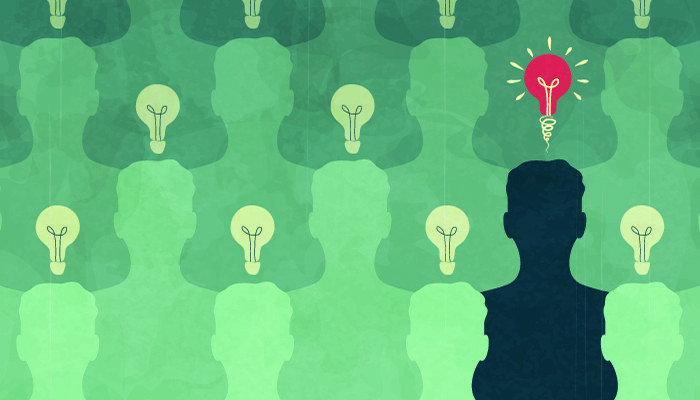Case Study: Creating A Revolution
May 22, 2018 • Features • Management • 4 winnng habits • Jan Van Veen • management • Mining • more momentum • Oil and Gas • VP of Service • big data • Business Disruption • Chief Digital Officer • Digitalization • field service • Hackathons • Service Management • Servitization • Service Innovation and Design
In this latest of his Momentum Case Studies, Jan van Veen, co-founder of moreMomentum, interviews proven leaders across the globe who are successfully implementing the 4 Winning Habits to lead innovative, energised and engaged teams.
Here the case study examines a global leader serving the mining and oil & gas industries. Much of their recent success has come because they take services very seriously, being seen as a knowledge partner to help their customers improve operational efficiency, reduce risks and increase profitability.
The challenges faced
The company operates in traditionally slow-moving industries with large incumbent players and has become a leader by creating a strong service business which now generates a significant portion of total revenues, deepens customer relationships and creates resilience during economic downturns.
However, it has now spotted that a potentially significant disruptive threat could emerge from ‘big data’ and data analytics technologies, enabling new types of services. In the past, they would have considered taking five years to develop new equipment to be fast for the industry, but now understands that when it comes to future services, the speed of innovation needs to be higher.
Senior management is very aware that customers will move away if they see a better way of doing things, so the company must adapt if it is to stay a market leader.
The Strategy
The company has entered a period of change. To meet the disruptive threat ahead it must be visionary: to redesign itself and its culture so it can move much faster to keep ahead, enthusiastically embracing digital technologies with a focus on the end-to-end customer experience. In fact, it has to re-imagine its relationship with its customers so that rather than selling products, it provides ways to help its customers improve their operational processes and even their business models.
The company has demonstrated success from the 4 Winning Habits for Momentum so far, but now they need to take it to another level. Here we will show how they are using each of the 4 Winning Habits in the implementation of its strategy, creating Momentum for long-term sustainable success.
Direction – the common cause that everyone can get behind
The company management has recognised that, at a time of change, a compelling vision describing their role to help customers be more profitable is important to pull everyone together in the same direction. It is being spread throughout the company using both traditional townhall meetings, the company intranet as well as new digital social sharing methods such as Salesforce, Chatter and Yammer.
It helps operational messages fit into context if there is a beacon for people to move towards if there is a vision of what the company will look like in five yearVP of Service Marketing: “It helps operational messages fit into context if there is a beacon for people to move towards if there is a vision of what the company will look like in five years, what the industry will be like, what our company will be like. Otherwise, you have isolated initiatives”.
To push the new company direction, the company has been busy hiring a new CEO, CMO and CDO (Chief Digital Officer), all with experience in driving innovation. The Board understands the need for change, but the company can be a supertanker which takes time to turn. However, it is also aware that the competitive landscape can change quite quickly.
Dialogue – open discussion at and between all levels to encourage new ideas
Digital initiatives are at the centre of this company’s reinvention, so senior managers are heavily involved in steering new ideas, to get behind them and also to prevent them from breaking current business streams.
Across the company, at least 75% of targets and incentives are collective, leading to limited silo thinking between teams since they’re all in the same boat. Where there is friction, it’s usually because goals have been set too narrowly and issues fall between the silos. As a result, there is much less politics than might be expected in a large company and a higher level of transparency on performance.
This all helps create a culture of trust with less finger pointing and blame.
VP of Service Marketing: “Rather than looking for blame, people look at how to fix issues and learn from mistakes. It works well due to open dialogue. People don’t feel threatened and are not so eager to hide problems”.
Decision-making – local decision-making empowerment
The company has always had a decentralised structure. Different markets are quite autonomous and allowed to make their own local sales decisions, choosing which sales and marketing initiatives in which to participate based on market needs. This has been a successful approach so far, but staff at all levels and across the business will need to now be included in the decision making processes if the company is to continue adapting at a fast enough pace.
Discovery – Looking for new trends, opportunities and threats (internal and external)
The newly established Digital Office is a powerhouse of new ideas to add new technology to client relationships, including tools such as the Internet of Things devices and data analytics. It has been set up to operate somewhat separately from the mainstream company in order to be free from ‘business as usual’ thinking.
Companies, middle managers actually, are often quick to kill new products they see as a threat to the status quo and that’s why it’s good to have a Chief Digital Officer, tasked to create change and disruptionVP of Service Marketing: “Companies, middle managers actually, are often quick to kill new products they see as a threat to the status quo and that’s why it’s good to have a CDO, tasked to create change and disruption. We might all be comfortable with how things are today and not want to change it but I’m damn sure there’s someone out there who wants to kill our business model, and will be aided and abetted by our customers if they see a better way of doing things”.
The company has even started trying new approaches to R&D, such as hackathons.
VP of Service Marketing: “When I first heard of hackathons I have to admit I was sceptical, but from what I’ve seen they actually allow people to look at problems in new ways and get people involved who would never normally be involved, and maybe redesign the way of doing things. And for big companies, that’s what we have to do, because our competitors don’t worry about the fact we have an established base and products, they’re actually thinking ‘How can I change the industry to make money? They don’t care if it destroys our business’”.
The company has also started involving customers in its processes, for example with surveys. They keep the company honest about its achievements, drive change and allow them to spot systemic issues. The voice of the customer can be very powerful.
Next Steps:
Change is an ongoing process at this manufacturing company, but they recognise the need to accelerate the pace of change to a new level and then make it ‘business as usual’ – a revolution in the mining sector!
The 4 Winning Habits for Momentum will be key. They are working on a clearer picture of the future state of the company, to give stronger Direction to the business units and local staff for local Decisionmaking.
Dialogue with staff will improve, so personal objectives will be better aligned to the strategy and not be so focussed on purely financial targets, but also learning, collaboration and Discovery of new opportunities. If they can do all this, then they will truly be creating a revolution in mining.
Outcomes
The huge growth in the service business at the company has brought enormous benefits for their customers, made the company a trusted ‘knowledge partner’ and expertly positioned them to forge ahead into digital transformation.
People buy from them now because of the advice they give and their approach to improving their customers’ businesses. For instance, mining equipment runs 24/7/365 and downtime can cost many €100,000s per day so, they have redesigned parts, consumables and field services to reduce the time it takes to change them, so reducing costs for their customers.
Energy efficiency has been another focus, as has the charging model – customers pay for service contracts by the ton, so they know their costs in advance. These changes epitomise the innovations that the company has achieved, and there are many more on the way.
Be social and share





















 Field Service News is published by 1927 Media Ltd, an independent publisher whose sole focus is on the field service sector. As such our entire resources are focused on helping drive the field service sector forwards and aiming to best serve our industry through honest, incisive and innovative media coverage of the global field service sector.
Field Service News is published by 1927 Media Ltd, an independent publisher whose sole focus is on the field service sector. As such our entire resources are focused on helping drive the field service sector forwards and aiming to best serve our industry through honest, incisive and innovative media coverage of the global field service sector.
Leave a Reply